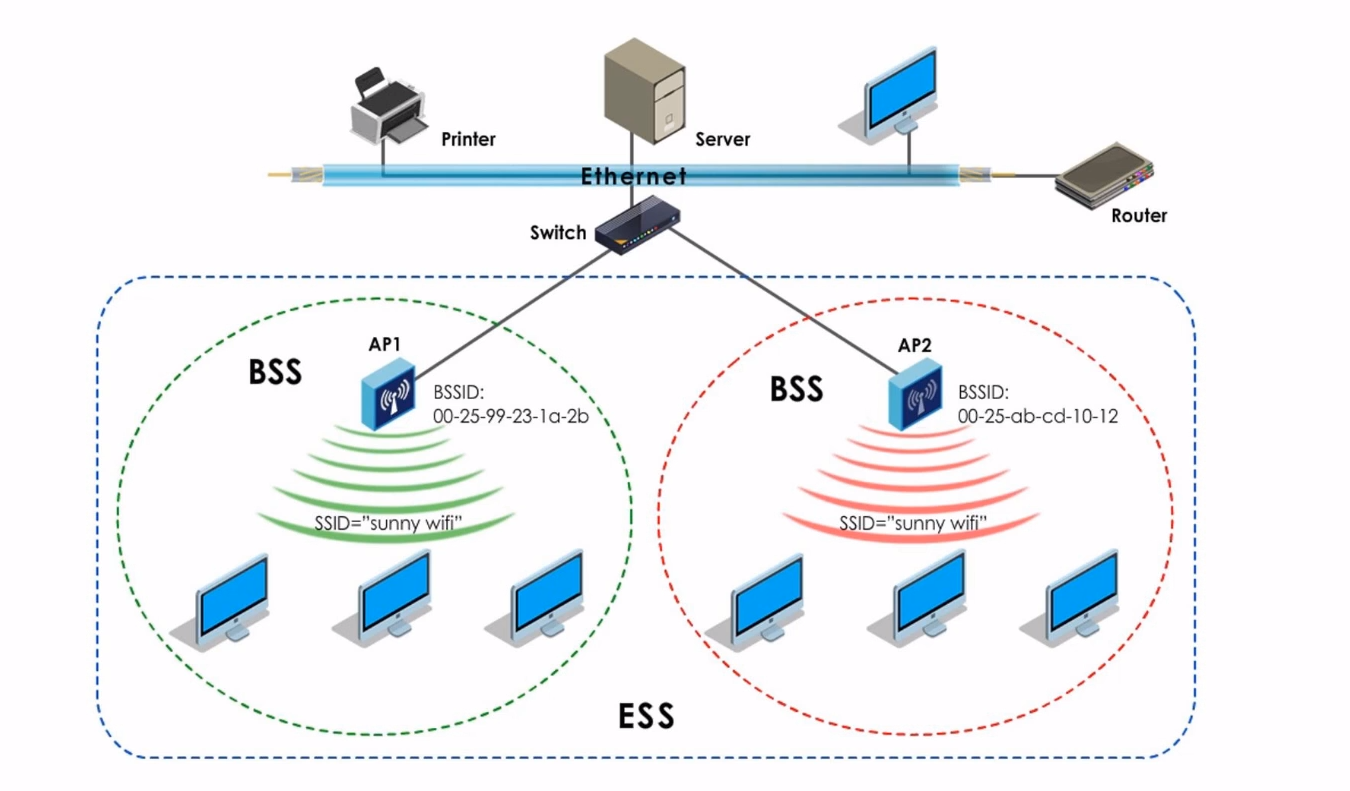

If you look at the classification of wireless LANs, you will find Infrastructure, Pear-to-peer and Bridged. I like the WiFi modes explained at http://freewimaxinfo.com/wifi-modes.html, so let me explain them again. Depending on the type of connection for accessing the Internet and sharing files, there are two main well-known modes: Infrastructure Mode and Ad Hoc Mode. The wireless adapters that we use come in various formats such as PCI, PCMCIA and USB, and the network interfaces have 802.11 standards. There are two operating modes in 802.11 standards, WiFi ad-hoc mode is known as Peer-to-peer mode. The second mode is WiFi Infrastructure mode, both hardware and software must be configured.
Both of these modes require Service Set Identifier (SSID) for verification. In infrastructure mode, the AP specifies the SSID instead of the access point. In ad-hoc mode, only Station (STA) is created. An Access Point (AP) broadcasts SSIDs approximately ten times per second. When the client device that will be connected connects to the network, it must announce the SSID again. Using this basic technique, wireless sniffers can collect and identify network names and other interesting information. Let's discuss each of the two types.
Infrastructure Mode
Our computers, Let's say we try to connect to a Wifi network with phones. The client port that our computer will connect to. Which line do we use to connect? It is now necessary to have an Access Point (AP) that broadcasts WiFi. A Wireless Access Point (AP) can also be a router. If we don't have WiFi near us, we can broadcast the hotspot from our phone, so it can be a phone. In infrastructure mode, you can allow many clients to connect to WiFi. Configuration is not difficult either. Normally, once you open a router, you need to know how to connect to it. Admin username and password included. You can use the damn link, but the Default Setting will not be secure.
In short, there must be at least one AP and one Station in Infrastructure Mode. The combination of these two is the Basic Service Set (BSS). The AP is generally connected to a wired-network called a Distribution System (DS). When the same wired-network is connected to more than one AP (Access Point), an Extended Service Set called ESS occurs.

See the picture. From the DS, the APs connect and communicate and redistribute it as a wireless connection. That is, clients connect and use it. BSS occurs. When two or more APs are connected, it becomes an ESS. Just to add a little more, in Linux systems, working as a STA is called Managed Mode, and working as an AP is called Master Mode. If you see Managed Mode and MasterMode, you should keep that in mind.









0 Comments